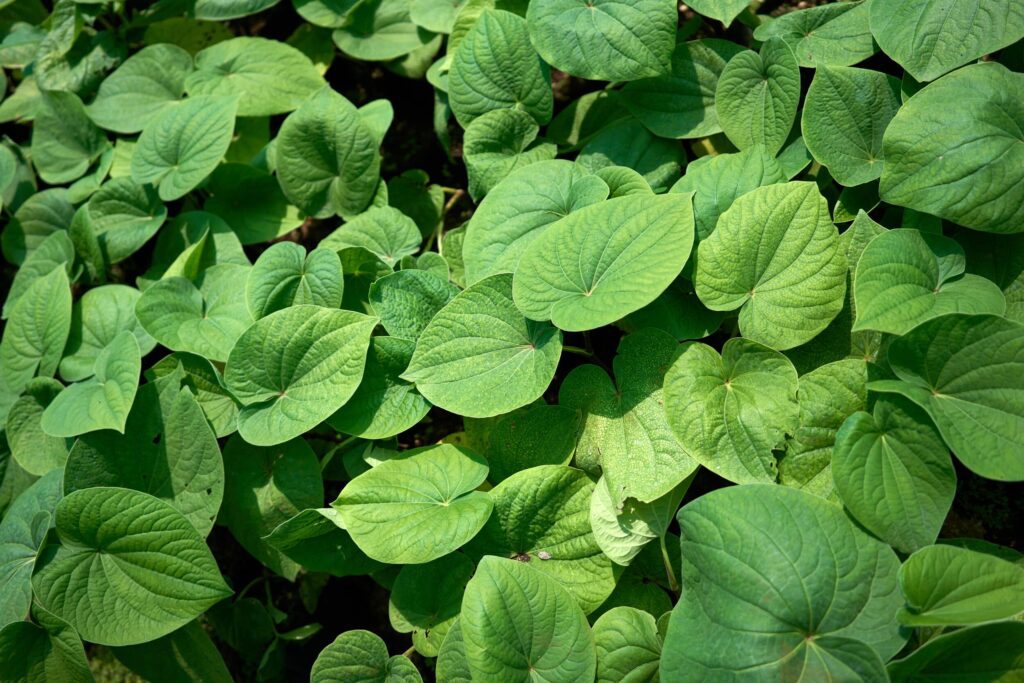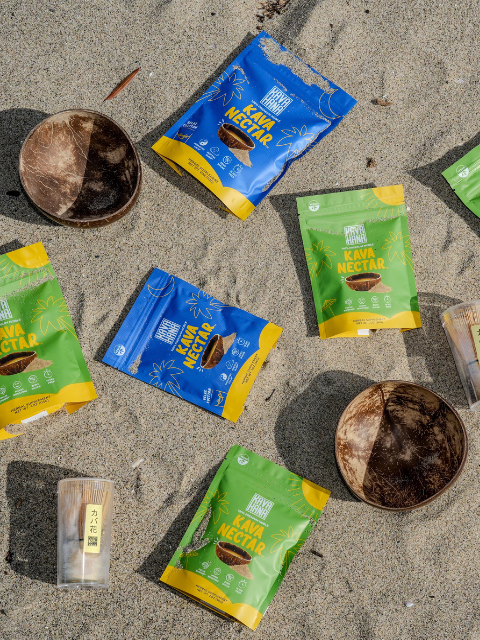You’ve heard us talk a lot about kava, the drink, its earthy flavor, and the rich South Pacific Island cultural tradition surrounding it. But have you ever considered where kava actually comes from? The kava plant itself?
Most of us think of kava as the brownish powder that is mixed with water to create the relaxing, social beverage that we’ve come to love. But it doesn’t start out that way.
Kava comes from the pepper plant Piper methysticum. It is a long lived perennial plant, which means it can live for up to 30 years, unlike short-lived plants that only live up to 10 years, or even less.
One of the most unique things about the kava plant is how its reproduced. Most plants that produce flowers reproduce through pollination. This involves pollen being moved from the male part of the plant (the stamen) to the female part (the pistal) for reproduction to happen.
Kava can’t reproduce this way because even though it flowers, it can’t reproduce through its seeds. This comes from the complexity and high number of chromosomes it has (known as ploidy).
Therefore the only way it can reproduce is by actively being cultured and propagated. This involves taking cuttings from a fully grown plant from about the roots when the plant is harvested an replanting them to grow as a new plant.
What does it look like?
The kava plant is classified as a shrub. Its growth comes from one set of roots, called the root ball, and it can retain its structure throughout the year.
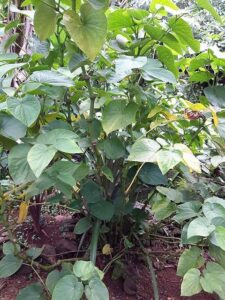
It’s very tall, growing up to 12 feet high, and has thick, succulent swollen stems with nodes periodically placed. The nodes can be different colors, from green to black, and change throughout the plant’s maturity. Nodes are also one way to tell different kava cultivars from each other. Nodes are also important for propagating new kava plants. There needs to be at least one node (though two is ideal) for new growth to stem from (as you can see below).
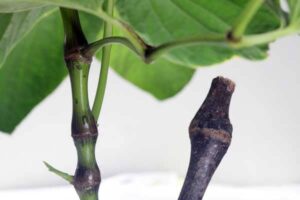
Its biggest characteristic is its large heart-shaped green leaves. They are smooth and bright in color and can grow to be 15-20cm long (that’s 6-8 inches).
Another unusual characteristic of kava is that it increases its leaf production very quickly during the flowering cycle. Most flowering plants stop producing leaves when they flower.
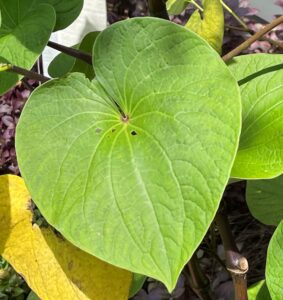
The kava plant does produce flower spikes but never an actual flower. It starts off quite small and light green in color. Then, it grows throughout the flowering cycle into a long, thin, yellow cylinder shape. While the texture looks like it, these flowers don’t produce any seeds. As mentioned above, kava can’t produce seeds and doesn’t reproduce like most other flowering plants—the Kava flower cycles once a year, and it lasts a few months. Once the flowers reach maturity, they die off after a bit of time.
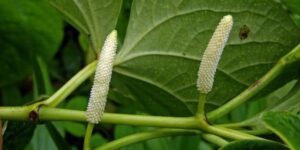
Kava roots and rhizomes are considered the most valuable parts of the plant for the beverage. The rhizome is the horizontal part of the root that sends out both shoots and roots. This part of the plant has the highest levels of kavalactones, the active ingredients in kava that give it the relaxing and social effects it’s known for.
The roots are thick and soft-wooded when fresh, but when harvested and dried, they become brittle and hard. This is where the kava powder comes from. It takes 2-3 years for kava roots to mature to the point where they have potency, that is to have the have the effects.
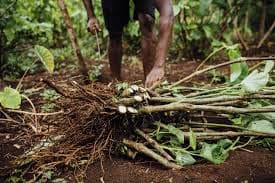
Most traditional kava farmers like to leave kava a bit of extra time to grow, leaving it until it’s about 5 years old. This allows more kavalactones to be produced and also helps with the smoothness of the drink.
This large, leafy shrub can be found natively on most of the pacific islands and can be grown world wide under the right conditions. While on out the outside, the kava plant may not look like anything special, we all know its what’s on the inside that counts.

